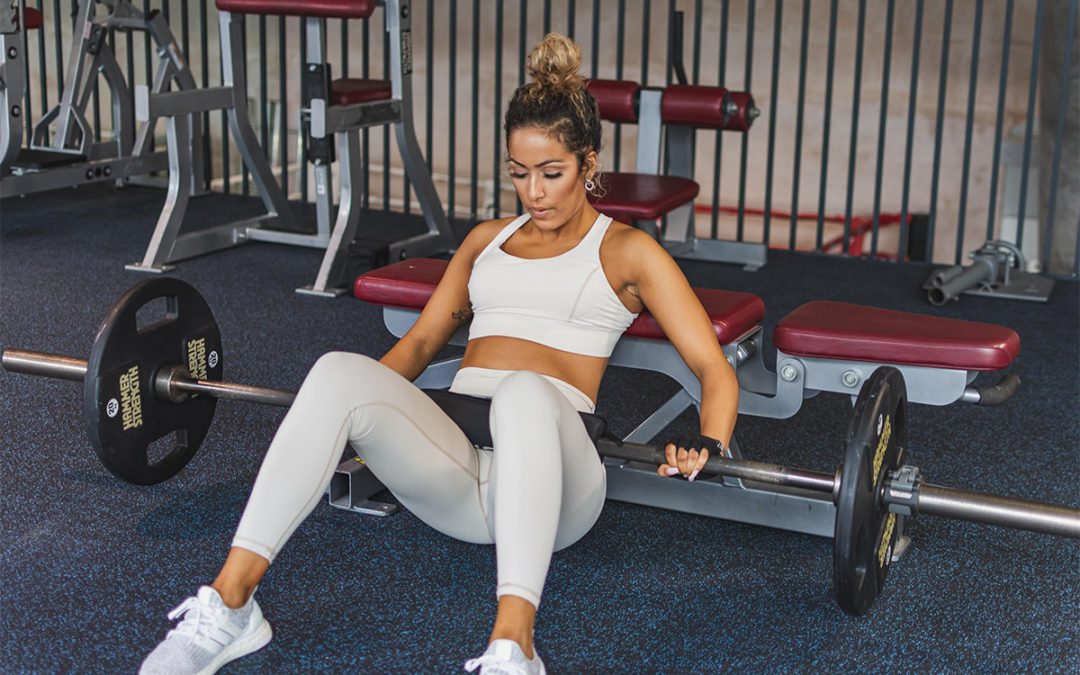When you’re able to hit the gym, having access to those heavy weights makes lower body day a lot easier. Loads of reps with light weight doesn’t increase strength effectively, so having access to the barbells and big dumbbells is a must.
Increasing your strength means increasing the amount of force you’re able to produce by contracting a muscle. By training for strength, a mixture of neuronal changes and muscle growth occurs, meaning that your body adapts to the exercise, and you’ll keep getting better at it.
But there are loads of indirect ways strength improves your health and fitness too. Conditioning the muscles reduces your risk of injury, improves your posture, increases your energy levels, enhances your endurance, and protects your bones and joints. Plenty of reasons to do it, then.
To start building strong glutes and legs, a few fundamental exercises should be a part of your routine. Plus a few more which will help you progress each muscle group effectively. Here are our top 10 favourites.
3 Tips for Strength Training
To strength train effectively, there are a couple of top tips that will help you see progress in this area a lot faster. Optimising your workout towards this goal means remembering a few key differences between strength training and other exercise types.
1. Test your 1 rep max
Strength training is all about lifting heavy. Your overall aim is to increase the amount of weight you can lift for each exercise. It’s essential to understand what the maximum weight you can lift is to do this properly. From this, you can always make sure you’re choosing the right weight and challenging yourself.
Testing the amount of weight you can lift for 10 reps won’t help with strength training. Aim to test the amount of weight you can lift for 1-3 reps. Once you know this, you can calculate the amount you should be aiming for when working within the 3-5 rep range.
2. Work within a selected rep range
When strength training, the optimum number of reps to do is between 3-6. Select a number within this and perform it for 4-5 sets. The weight needs to be heavy enough so that this is a challenge.
Aim not to do more than 8 reps within a set. The more reps you can achieve, the more likely you will be conditioning your muscular endurance more than your strength. Try to keep the rep numbers low and the weight high.
3. Recovery properly
Because of the heavy loads lifted, strength training demands recovery time—both between your sets and between your sessions. Unlike HIIT or circuit training, you won’t be able to do as many exercises or workouts as often.
Your body makes changes and adaptations from strength training during times of rest. It’s a fundamental part of the process. Make sure to get enough so that you can keep progressing and performing at your best.
Front/back squat
Probably the most iconic gym exercise ever. And with good reason. Using a barbell to perform a squat is excellent for strengthening the glutes, quads, and hamstrings, but it also helps to engage and condition other muscles from all around the body.
If you’re not ready to try with a barbell, the squat has loads of different variations that can be done with dumbbells. Hold one at your chest, two at your shoulders, or down by your sides. There are loads of options, earning it a place in everyone’s workout routine.
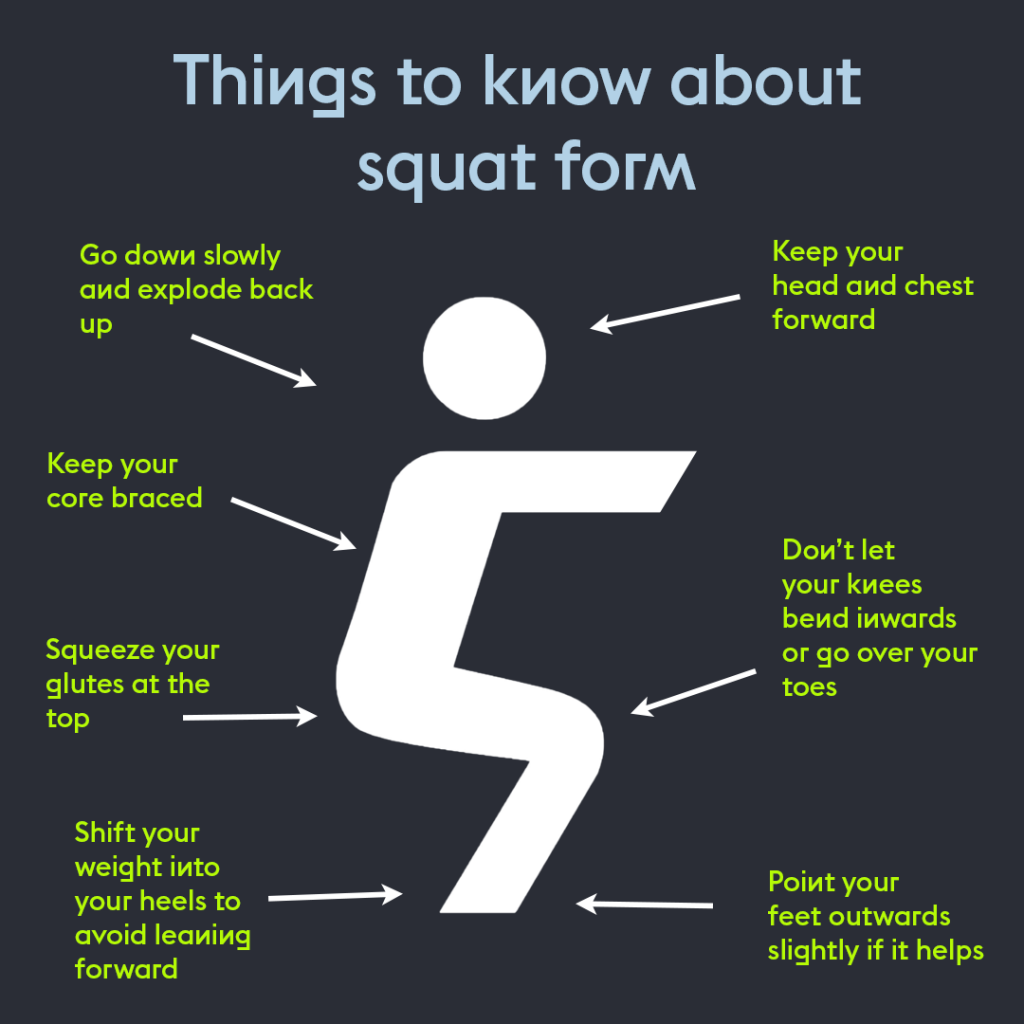
Deadlifts
Another strength training staple, the deadlift is vital for increasing strength in the posterior chain. The posterior chain includes all the muscles that run down the back of the body, including the back, glutes, hamstrings, and calves.
The deadlift can be an awkward move to get started with. The movement of sitting the hips back, keeping the back flat, and pushing the floor away takes a bit of practice. Once you’ve got it down, it will work wonders for your lower body strength.
You can start off with a pair of dumbbells but progressing to a barbell is better for ensuring equal loading across the body.
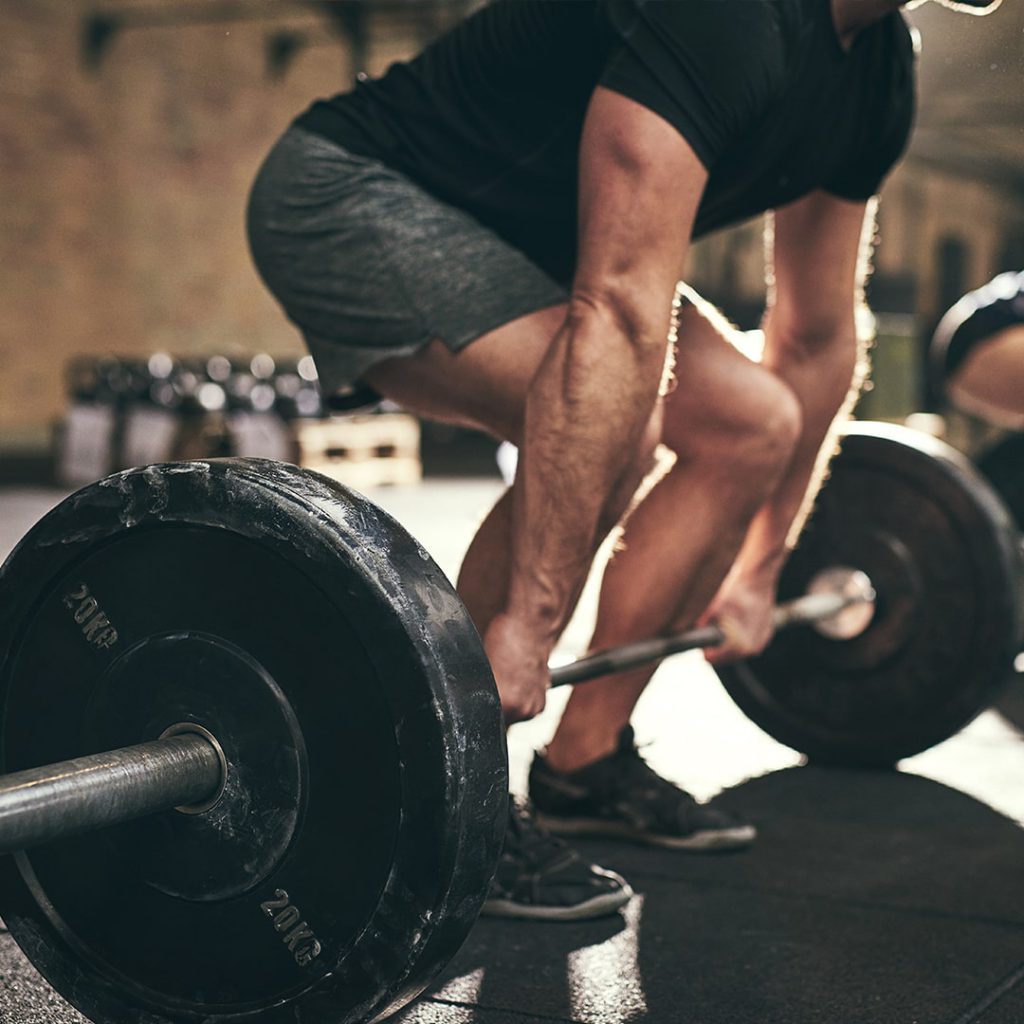
Bulgarian split squats
Getting the technicals of this exercise right might take some time. It asks for quite a bit of balance. It’s a split squat progression, which involves placing the back foot on a raised surface. It focuses mainly on the quads and the glutes.
Because you’re working one leg at a time, it’s not long until this move will start to feel like a challenge. You can hold a pair of dumbbells by your sides or a barbell across your shoulders, whichever you prefer.
Forward lunge
Lunges are brilliant for getting the quads fired up. The forward lunge is a lot more demanding than the reverse version, as it’s a lot harder to control your body weight throughout the movement. Your core gets much more involved.
However, don’t neglect the reverse option if you’re looking for something to target the hamstrings a little more.
You can add weight to the forward lunge in whatever way you want. Holding a kettlebell at your chest, dumbbells by your sides, a barbell across your shoulders, or, if you’re feeling ambitious, a weight plate above your head.
45-degree leg press
The 45-degree leg press targets the same muscles as the squat, but because you’re supported by the seat and the back pads, you’re able to lift a lot heavier.
For this reason, it can be seen as an ‘accessory’ exercise to your squats, helping you to further develop true strength in your quads, hamstrings, and glutes.
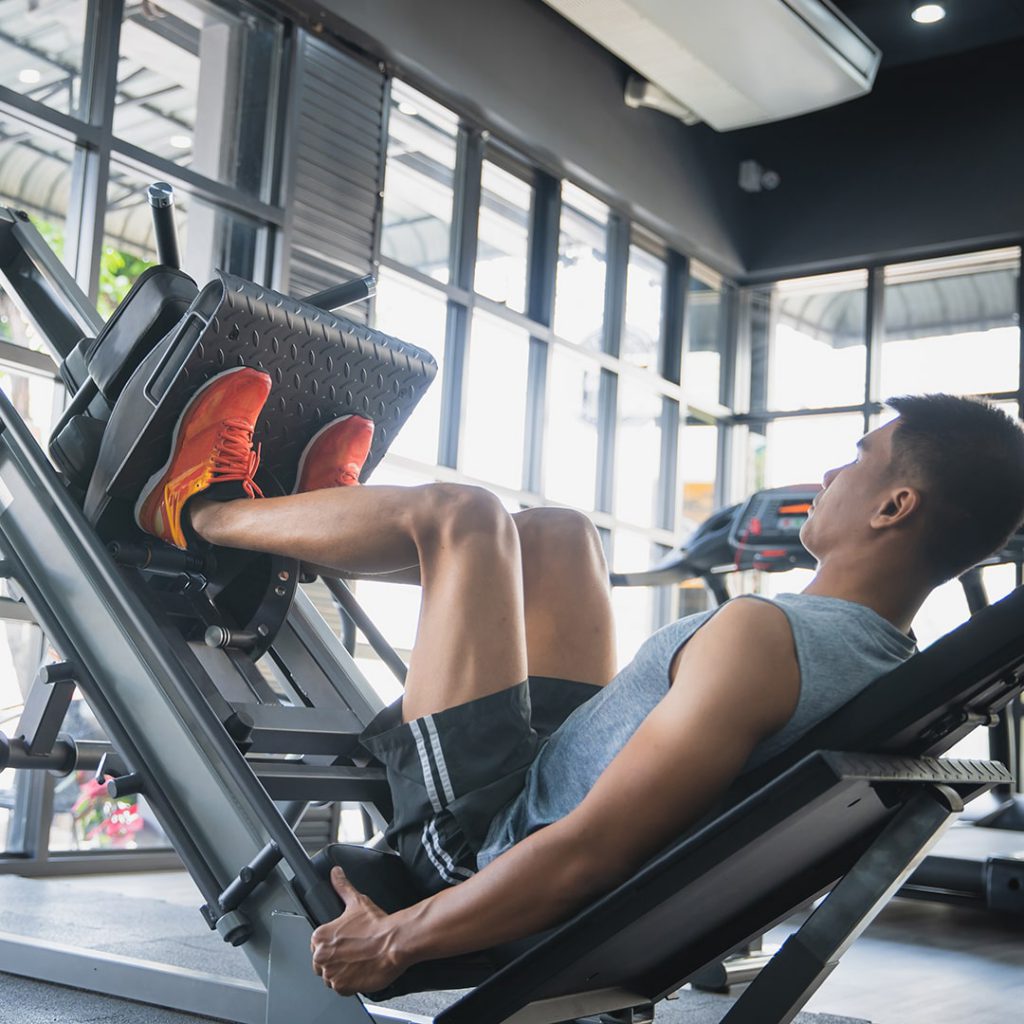
Hip thrusts
Hip thrusts target mainly the glutes. They’re great for practising that hip hinging movement that comes into many exercises and can quickly help you develop strength, speed, and power.
To perform a hip thrust, you need a bench or something to rest your upper back on. It’s traditionally done with a barbell placed across the upper thighs, but beginners can use alternatives like a weight plate or kettlebell.
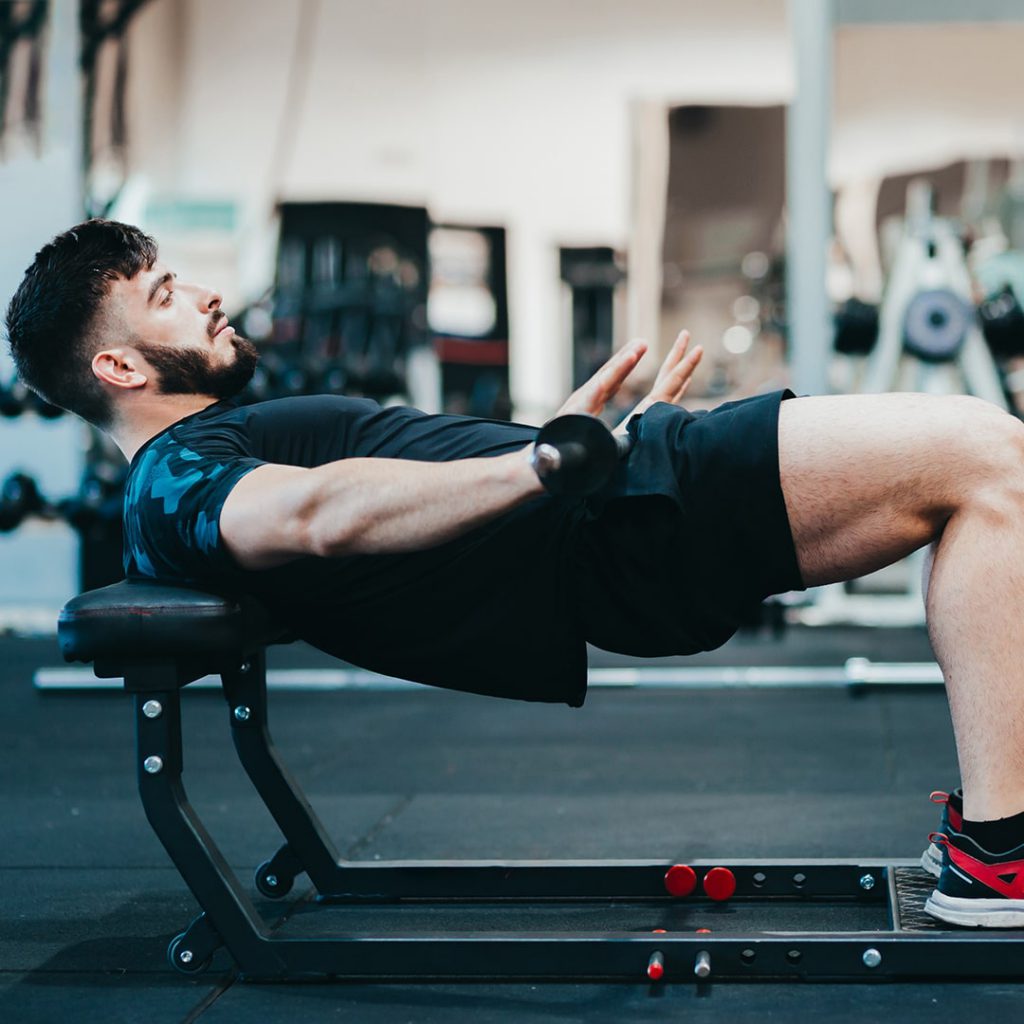
Step-up
Step-ups essentially mimic the stair climbing movement, and adding resistance by holding a pair of dumbbells is a way to make the quads work even harder.
Although it’s not a traditional weightlifting exercise, the challenge of working against gravity and the need to stabilise and balance yourself throughout makes it a worthwhile addition to your routine.
Cossack squats
Unlike many other squats, the Cossack squat offers an alternative plane of movement, meaning the targeted muscle fibres are slightly different. By doing this, you can make sure to develop well-rounded lower body strength.
Cossack squats work one side at a time and require a high degree of flexibility. By adding this exercise to your routine, you can improve your joint health and balance, supporting your strength training efforts in the long run.
Straight leg deadlifts
Very similar to the traditional version, the straight leg deadlift places even more focus on the hamstrings.
Rather than bending the knee to help you get down towards the floor, maintaining only a slight bend in them will activate your hamstrings a little earlier, and you’ll use more of those muscles to drive you back up to standing.
You won’t be able to lift as heavy here, mind.
Calf raises
The calf muscles are recruited in many lower body lifts, but sometimes it’s helpful to give them extra attention.
Calf raises are usually done from standing and can be done on a machine, with dumbbells, or even just using your body weight.
By simply raising yourself onto the balls of your feet and lowering back down again, you can help develop your lower leg muscles, which will support you better in bigger lifts.

